Occupational safety training in the urban landscape industry
99,000 ₫
Note: The above price is calculated per person, prices may fluctuate depending on the number of participants in the course and market movements. For more accurate price support, please refer to the price list or contact our consulting staff directly.
The Urban Landscaping Safety Training course is a course that provides knowledge of Group 3 occupational safety. The course will raise awareness of how to prevent workplace accidents for participants. Accordingly, the occupational safety training content is closely aligned with Article 18 of Decree 44/2016/ND-CP.
Table of Contents
Toggle1. Overview of the urban landscape industry
a. What is the urban landscape industry?
The urban landscape industry is a field that studies, designs, and manages green spaces in urban areas and city regions. It focuses on creating and maintaining public spaces, natural landscapes, and artificial landscapes to improve the quality of life for city residents.
This industry requires interdisciplinary knowledge and skills, including architecture, landscape architecture, urban planning, ecology, and other fields. Urban landscape professionals often work in designing open spaces and green systems, protecting and restoring the environment, planning and managing public works, and participating in urban development projects.
The goal of the urban landscape industry is to create harmonious, aesthetic, and useful green spaces that contribute to improving the health and spirit of city residents, reducing environmental pollution, and creating a sustainable living environment.

b. Types of machinery in the urban landscape industry
In the urban landscape industry, several types of machinery and equipment are used to carry out the design, construction, and maintenance of landscape spaces. Below are some common types of machinery in the urban landscape industry:
- Lawn mower: Lawn mowers are used to trim grass and turf in public areas such as parks, flower gardens, and sidewalks.
- Tiller: Tillers or soil excavators are used to loosen soil, dig soil, and create underground pipelines when constructing drainage or water supply systems.
- Excavator: Excavators are machines that can move soil, rocks, and other materials to create roads, shape terrain, and build infrastructure structures.
- Tree planter: Automatic or semi-automatic tree planters are used to plant trees and greenery in public areas and gardens.
- Irrigation machine: Automatic irrigation machines or irrigation systems are used to supply water to trees and grass in public areas and gardens.
- Dredger: Dredgers are used to shape terrain by moving soil and leveling surfaces during construction.
- Branch cutter: Branch cutters or automatic pruners are used to trim branches and trees in urban areas.
- Cleaning and waste collection machine: These machines are used to clean public areas by collecting waste and maintaining environmental sanitation.

c. Typical enterprises in the urban landscape industry
Below are some typical enterprises in the urban landscape industry in Vietnam:
- Land Sculptor: Land Sculptor is a leading landscape design company in Vietnam, specializing in urban landscape design and management, parks, playgrounds, and green spaces. The company has participated in many important projects such as Ecopark Urban Area, Vinhomes Riverside Urban Area, and Flamingo Dai Lai Eco-tourism Area.
- Landscape JSC: Landscape JSC is an enterprise specializing in landscape design and construction of landscape projects in Vietnam. The company has implemented many successful projects such as the Vietnam National Exhibition and Convention Center, Suoi Tien Ecotourism Area, and Cau Giay Park.
- CPG Vietnam: CPG Vietnam is an international company specializing in landscape design and urban planning. The company has participated in many major projects in Vietnam, including Hon Ngoc Viet Seaside Tourism Project, Yoko Onsen Quang Hanh Eco-tourism Project, and D’Maris Bay Entertainment Project.
- Green Idea Architecture & Landscape Design: Green Idea is a landscape and architectural design company headquartered in Hanoi. The company has implemented many notable projects such as Dai Nam Tourist Area, Suoi Mo Water Park, and Centennial Urban Park.
- Arkiplan International Vietnam: Arkiplan is an international company with a branch in Vietnam, specializing in landscape design and urban planning. The company has participated in many notable projects such as Vinpearl Can Tho Eco-tourism Area, Ocean Park Urban Area, and Bai Dai Nha Trang Seaside Resort.

d. Specific jobs in the urban landscape industry
In the urban landscape industry, many specific jobs are carried out to design, construct, and manage landscape spaces. Below are some common jobs in this industry:
- Landscape design: This job includes creating drawings, diagrams, and plans to determine the structure and form of landscape spaces. Elements such as trees, water surfaces, pathways, locations of public areas, and other components of the landscape are considered and calculated.
- Urban planning: This job involves defining the spatial distribution and arrangement of landscape elements in urban areas. It includes analyzing local characteristics, identifying objectives, and determining planning measures to create harmonious and functional landscapes.
- Landscape construction: This job includes implementing design plans through activities such as soil excavation, tree pruning, installation of irrigation systems, construction of infrastructure, and environmental protection.
- Landscape management: This job involves maintaining and preserving the landscape space after construction. It includes tree management, irrigation system management, infrastructure maintenance, weed control, and managing other environmental issues.
- Environmental assessment: This job involves determining the impact of landscape projects on the natural and social environment. Environmental assessors analyze factors such as climate, soil, ecology, water resources, and social impacts to provide environmental protection solutions.
- Consulting and education: This job includes providing information, guidance, and recommendations to local authorities, organizations, and individuals on urban landscape issues. It may also include training and teaching about urban landscapes.
2. Overview of occupational safety training in the urban landscape industry
a. What is occupational safety training in the urban landscape industry?
- Occupational safety training in the urban landscape industry are sessions that provide awareness on how to prevent work accidents for workers. Accordingly, those working directly in the urban landscape industry belong to group 3.
- The occupational safety training course helps workers recognize and avoid hazards, reducing the risks of work accidents while working.
REGISTER FOR OCCUPATIONAL SAFETY TRAINING SERVICE
b. Training duration
Initial occupational safety training duration
- Total training duration is at least 24 hours, including examination time.
- 8 hours of theory on the system of policies, laws on occupational safety and hygiene
- 8 hours of theory on basic knowledge of occupational safety and hygiene
- 4 hours of theory on specialized training content
- 2 hours of practice on specialized training content
- 2 hours of theoretical examination at the end of the course
The safety training center will allocate time into several training sessions depending on the schedule of employees. Typically, there will be 6 training sessions, the course will take place over 3 days, provided that the manufacturing enterprise arranges continuous learning time.
Periodic occupational safety training duration
- Before the occupational safety card expires, workers who want it renewed must undergo a periodic occupational safety training course, with the periodic training duration being at least 50% of the initial training duration.
Explanation: the total duration of periodic occupational safety training is at least 12 hours, including examination time. After completing the periodic training course and passing the test, the worker will be reissued or extended with the occupational safety card.
c. Training course content
| No. | TRAINING CONTENT | TRAINING DURATION (HOURS) | |||
| Total | Including | ||||
| Theory | Practice | Examination | |||
| I | System of policies, laws on occupational safety and hygiene | 8 | 8 | 0 | 0 |
| 1 | Overview of the legal system on occupational safety and hygiene. | 6 | 6 | ||
| 2 | System of standards, technical regulations on occupational safety and hygiene. | 1 | 1 | ||
| 3 | Specific regulations of state management agencies on occupational safety and hygiene in new construction, expansion, or renovation of facilities to produce, use, preserve, store, and test machinery, equipment, materials, and substances requiring strict occupational safety and hygiene. | 1 | 1 | ||
| II | Basic knowledge of occupational safety and hygiene | 8 | 8 | 0 | 0 |
| 1 | Basic knowledge of hazardous and harmful factors at the workplace. | 4 | 4 | ||
| 2 | Methods of improving working conditions. | 1 | 1 | ||
| 3 | Safety culture in production and business. | 1 | 1 | ||
| 4 | Rights and obligations of employers and employees; policies, regimes on occupational safety and hygiene for employees; functions and duties of the safety and hygiene network. | 1 | 1 | ||
| 5 | Safety and hygiene regulations, safety and hygiene signs and instructions, and the use of safety equipment, personal protective equipment; skills in first aid for work accidents, and prevention of occupational diseases. | 1 | 1 | ||
| III | Specialized training content | 6 | 4 | 2 | 0 |
| Comprehensive knowledge of machinery, equipment, substances that generate hazardous and harmful factors; analysis, assessment, and risk management on occupational safety and hygiene; safe working procedures with machinery, equipment, and substances requiring strict occupational safety and hygiene. | 6 | 4 | 2 | ||
| IV | Final occupational safety training examination at the end of the course | 2 | 2 | 0 | 0 |
| Total | 24 | 22 | 2 | ||
See more training content of 6 groups
d. Occupational safety card
After completing the occupational safety training course and passing the examination, workers will be issued an occupational safety card (commonly called occupational safety certificate group 3).
The group 3 safety card clearly shows information such as full name, date of birth, job, and specific working environment. It also includes the training duration, red stamp, and signature confirming course completion.
According to the regulations on card issuance stated in Clause 2 Article 24 of Decree 44/2016/ND-CP, it is divided into 2 cases:
- In the case where the employer and the employee have a labor contract, the employer must sign, stamp, and seal the occupational safety card for the group 3 trained worker after completing the training course from the occupational safety training unit and passing the exam.
- In the case of freelance or seasonal workers, without a labor contract, the training unit must sign, stamp, and seal the occupational safety card for the worker after completing the training course from the occupational safety training unit and passing the exam.

3. Identifying hazards in the urban landscape industry
In the urban landscape industry, there are many potential dangers that can affect workers’ safety and health. Below are some common hazards that need to be recognized to ensure workers’ safety:
- Hazards from tools and equipment: Using construction tools and equipment such as heavy machinery, cranes, excavators, and lawnmowers can be dangerous if not operated and used properly. Falling from heights, collisions, and equipment malfunctions can cause serious injuries to workers.
- Work accidents: During construction and landscape maintenance, workers may face accidents such as falls, slips, collisions, impacts, and injuries from construction materials. Improper storage, transportation, or exposure to construction materials can also pose risks.
- Environmental and chemical impacts: Working in urban environments can expose workers to risks from air pollution, water pollution, and waste. The use of chemicals such as pesticides, fertilizers, and herbicides can also harm workers’ health if safety regulations and measures are not followed.
- Hazards from construction works: While working in urban landscape construction sites, workers may face dangers from unfinished works, unsafe materials, broken stones, wet concrete, and unstable structures.
- Traffic accidents: Workers in the urban landscape industry often have to travel between worksites. Traffic accidents may occur while driving motorcycles, trucks, or construction vehicles, as well as interacting with other vehicles and pedestrians on the road.
4. Safety measures for the urban landscape industry
To ensure safety for workers in the urban landscape industry, the following safety measures can be applied:
- Ensure education and training: Provide workers with training courses and guidance on occupational safety, including safety regulations and procedures, risk management, and the use of personal protective equipment.
- Use of personal protective equipment (PPE): Ensure that workers are equipped with and correctly use PPE such as helmets, safety glasses, gloves, boots, reflective vests, and masks to protect their safety and health.
- Risk assessment and management: Conduct job risk assessments and determine preventive and risk management measures. This includes identifying and minimizing potential hazards, applying appropriate safety measures, and conducting regular inspections to ensure compliance with safety regulations and procedures.
- Worksite management: Ensure effective worksite management by establishing safety zones, pathways, and appropriate signage to prevent unauthorized personnel from entering hazardous areas. Additionally, ensure safe arrangement of materials, tools, and equipment so they do not endanger workers.
- Equipment inspection and maintenance: Ensure that equipment, machinery, and tools are regularly inspected, maintained, and repaired to ensure safe and effective operation.
- Regularly conduct work environment monitoring in factories, collecting and analyzing harmful factors for workers, thereby adjusting to reduce risks and prevent occupational diseases.

5. Types of accidents in the urban landscape industry
In the urban landscape industry, some accidents and incidents may occur. Below are some common types of accidents in this industry:
- Work accidents: During construction and maintenance of landscape spaces, work accidents are always a risk. These may be caused by structural collapses, falls from heights, collisions with tools and equipment, slips, or other hazards associated with construction environments.
- Traffic accidents: While working on urban landscape projects, employees and workers often travel between locations. Traffic accidents may occur during travel, including vehicle collisions, crashes with pedestrians or cyclists, and other road-related risks.
- Risks from tools and equipment: The urban landscape industry often uses tools, equipment, and machinery such as lawnmowers, excavators, cranes, and other construction tools. Accidents may occur when these are misused or safety rules are not followed, posing risks to nearby workers.
- Environmental impacts and natural disasters: Urban landscaping involves working with natural environments, and accidents or incidents may occur due to environmental impacts and natural disasters. For example, landslides, floods, damage to landscapes from natural disasters, or environmental pollution incidents may happen.
6. Benefits of occupational safety training in the urban landscape industry
An Toan Nam Viet provides your business with great benefits after completing occupational safety training courses as regulated in Decree 44/2016/ND-CP on occupational safety and hygiene for companies, factories, and enterprises.
- Workers can identify potential risks of work accidents and take preventive measures to avoid them.
- Your business can establish risk prevention measures in production, operation, and maintenance processes.
- Minimize costs when occupational safety risks occur.
- Uninterrupted production processes will help increase productivity and product quality.
- Comply with occupational safety laws and avoid legal risks.
- Create credibility and professionalism in all aspects, thereby elevating your company’s brand.
An Toan Nam Viet training courses are solutions to prevent and combat external factors that may cause harm to individuals, helping them avoid dangers that may lead to injury or even death.
REGISTER FOR OCCUPATIONAL SAFETY TRAINING SERVICE
7. Customer feedback after completing the training course
An Toan Nam Viet has many years of experience accompanying many businesses in Vietnam in general and in the southern provinces in particular. This responsibility is extremely valuable to An Toan Nam Viet, which is why our occupational safety training is always becoming more professional. Our motivation to grow stronger comes from positive feedback and suggestions from businesses. Below are the feedback from our valued partners we have served.
Bac Nam E&C Construction Investment Joint Stock Company
“This was the first time using An Toan Nam Viet services, and I was very surprised by the 24/7 dedicated support from the consulting team. The class organization was very fast and convenient for our company. Thank you very much for your service!”
Hoa Dat Construction and Trading Joint Stock Company
“An Toan Nam Viet services have greatly helped us simplify occupational safety and complete safety documentation for our work process. The consulting team was enthusiastic and timely in responding to our concerns. 5 stars for An Toan Nam Viet!”
See more customer interviews after using the service of An Toan Nam Viet
8. Occupational Safety Training Capacity of An Toan Nam Viet
An Toan Nam Viet is a reputable and quality occupational safety training center in Vietnam today. With occupational safety training sessions continuously held at factories, plants, or construction sites across the country (63 provinces in Vietnam).
REGISTER FOR OCCUPATIONAL SAFETY TRAINING SERVICE
Training license for occupational safety
- An Toan Nam Viet has been inspected and certified by the Department of Safety under the Ministry of Labor – Invalids and Social Affairs, granting certification to operate occupational safety and hygiene training. This further strengthens our capacity in occupational safety training.

Training materials and lectures
- Before training materials are used in safety training courses, they are reviewed and validated to ensure accurate knowledge and effective application.
- The teaching methods of instructors follow the standards of An Toan Nam Viet, based on the research and experience of experts in occupational safety and hygiene training, to achieve the highest learning efficiency for trainees.
Facilities
- Controlling classroom factors that affect the training process will improve teaching efficiency and knowledge absorption for learners.
- Our training facilities are always spacious and meet standards in terms of area, lighting, and training equipment.
9. Nationwide reputable and quality safety training center
At An Toan Nam Viet, we always prioritize dedication to occupational safety training. For us, imparting knowledge to workers on how to protect themselves so they have safety awareness in their work is part of building the nation.
To ensure effective training, we carefully and meticulously prepare every detail, from teaching tools, equipment, and materials to sound and lighting.
Our occupational safety trainers are experts with many years of experience in the field. They even have research works on hazard identification in various industries and prevention methods.
Their lectures are drawn from practical experience and conveyed vividly and clearly to workers. These factors help workers feel comfortable during training and better absorb knowledge. Of course, the training content always follows Decree 44/2016/ND-CP.
From there, workers learn many preventive measures against hazards and ways to protect themselves, applying them appropriately in real work situations.
Our safety training center is proud to provide professional and reputable occupational safety training services nationwide with the following advantages:
- Competitive training costs while maintaining high-quality training.
- Flexible training schedules that align with company production conditions.
- Fast and legally compliant certification procedures.
- Trainers with many years of industry experience.
- Classrooms are controlled for factors that improve teaching efficiency and knowledge absorption.
- Lectures tailored to occupational safety at businesses.
- An Toan Nam Viet works professionally and wholeheartedly to support customers quickly and accurately.

10. Additional occupational safety training materials for the urban landscape industry
- Occupational safety training material set
- Occupational safety materials for the urban landscape industry
- Occupational safety training test
1 review for Occupational safety training in the urban landscape industry
No comments yet

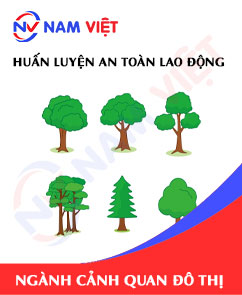
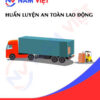
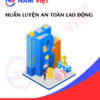



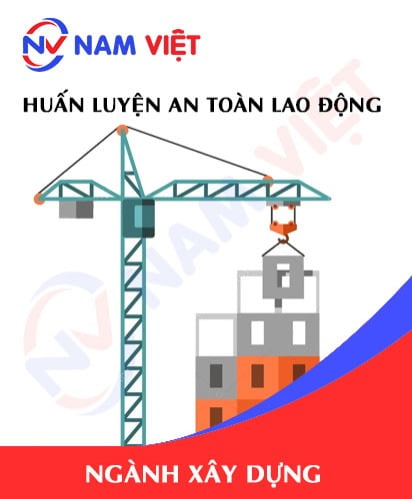
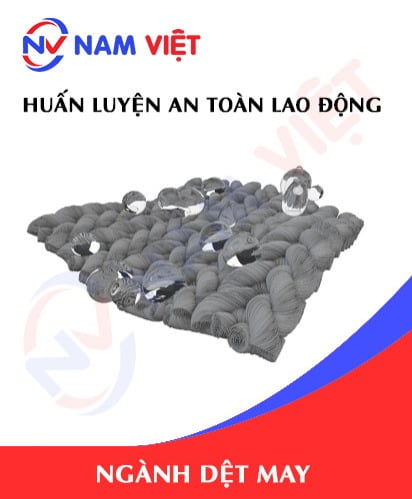
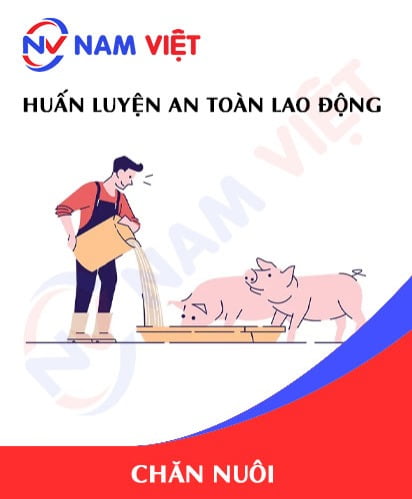
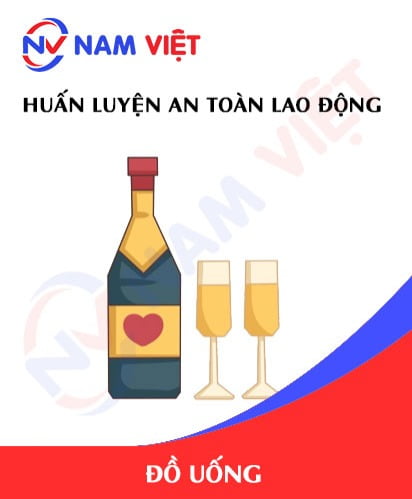
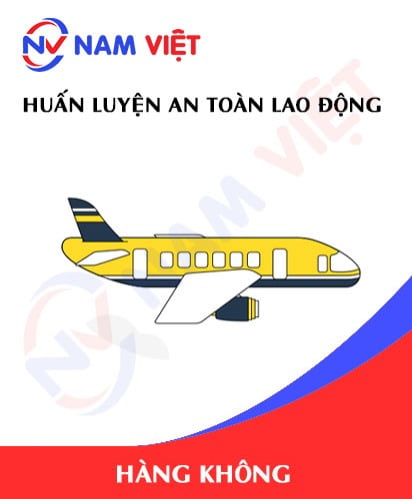
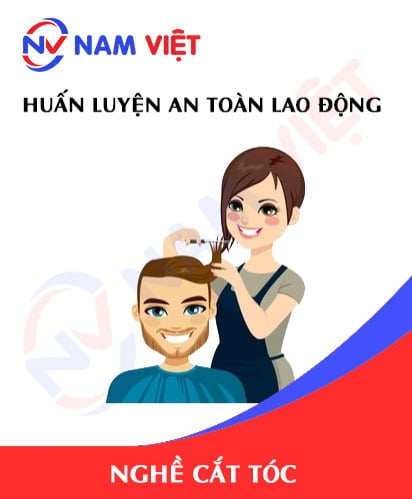
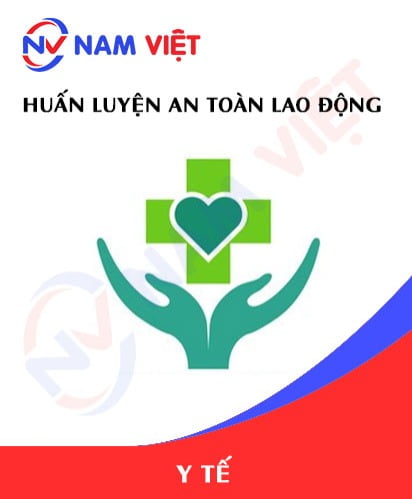
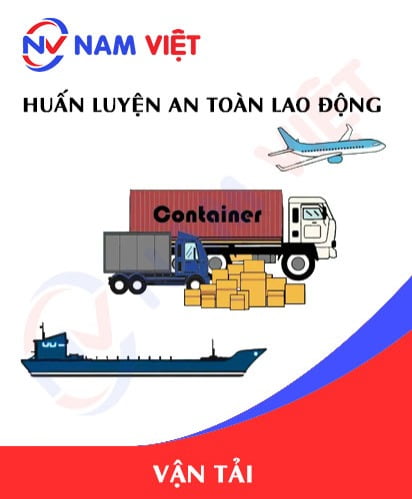
caotiensyhung.07081999
Dịch vụ huấn luyện an toàn lao động rất tốt nhé, giảng viên dạy rất sinh động dễ hiểu!